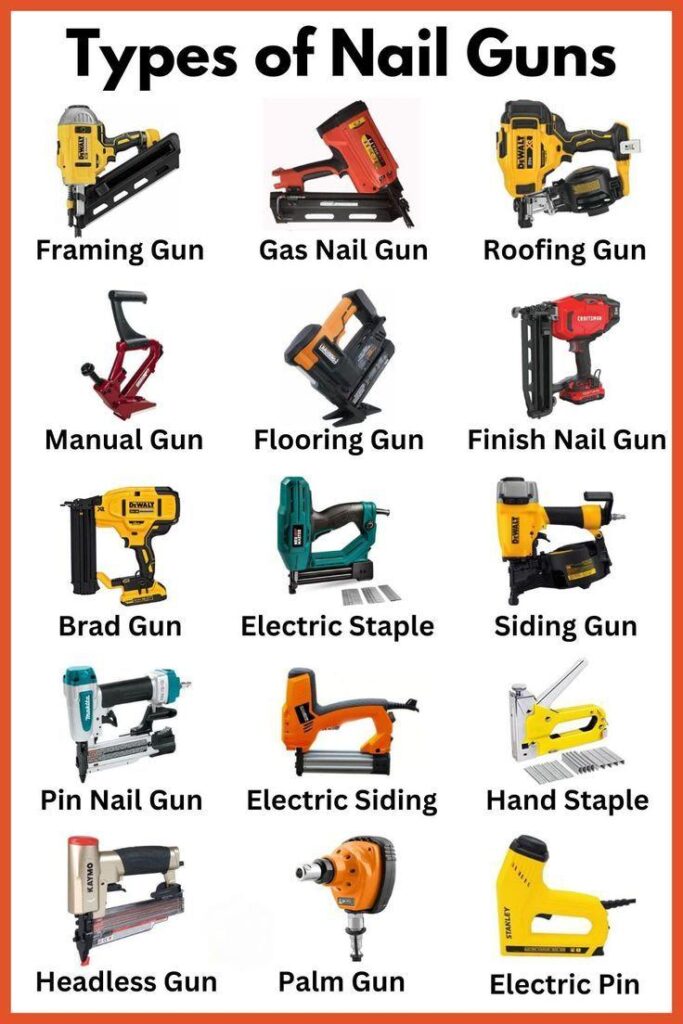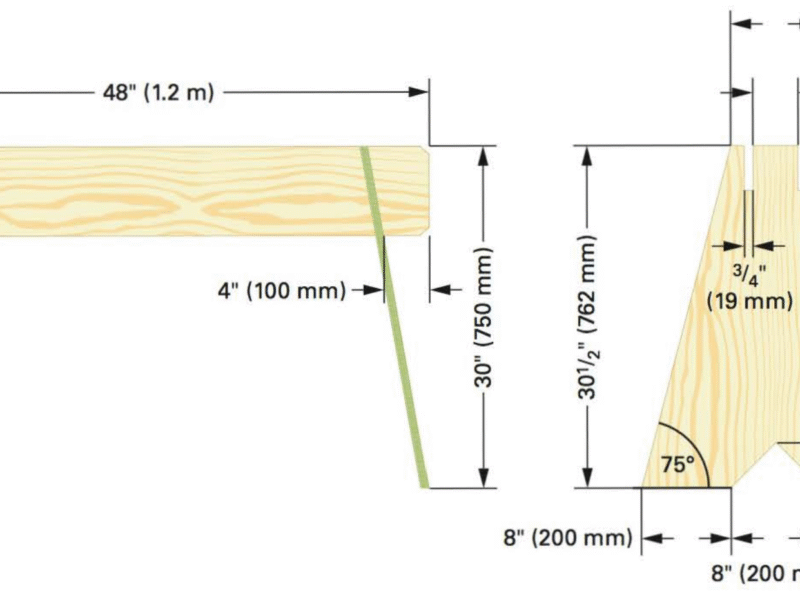Choosing the right nail gun doesn’t have to be complicated! Think of it like picking the right paintbrush for a job – you wouldn’t use a huge roller for fine details, right?
Here’s an easy way to break it down:
Step 1: What Are You Building? (This is the MOST important question!)
Different nail guns use different size nails, and some jobs need big, strong nails, while others need tiny, hidden ones.
- Big Jobs (Framing, Decking, Fencing, Sheathing):
- You need: A Framing Nailer.
- Why: These are the big guns! They shoot large, strong nails (2 to 3.5 inches long) that hold heavy wood together. Perfect for building walls, decks, sheds, or anything that needs a lot of holding power.
- Nail Size: Large, thick nails.
- Medium Jobs (Trim, Molding, Cabinets, Door/Window Casings):
- You need: A Finish Nailer (usually 15-gauge or 16-gauge).
- Why: These shoot smaller nails (1 to 2.5 inches long) that have a small head, so they’re less noticeable. Great for attaching decorative trim, molding, or putting together furniture frames.
- Nail Size: Medium, thinner nails, small head.
- Small, Delicate Jobs (Thin Trim, Crafts, Upholstery, Very Delicate Moldings):
- You need: A Brad Nailer (usually 18-gauge).
- Why: These use very thin, tiny nails (5/8 to 2 inches long) with almost no head. They leave a tiny hole, making them perfect for delicate trim work, picture frames, or attaching thin pieces of wood where you want the nail to be virtually invisible.
- Nail Size: Very thin, barely visible nails.
- Roofing (Attaching Asphalt Shingles):
- You need: A Roofing Nailer.
- Why: These are specialized for shooting specific roofing nails with large heads and short shanks, designed to hold shingles securely without tearing.
- Nail Size: Short, wide-head roofing nails.
Step 2: How Do You Want to Power It?
This affects convenience, portability, and cost.
- Air-Powered (Pneumatic Nailer):
- How it works: Connects to an air compressor with a hose.
- Pros: Very powerful, generally lighter (no heavy battery on the gun), often more affordable to buy the gun itself, very reliable for heavy, continuous use.
- Cons: You need an air compressor (which can be noisy and bulky), and the hose can get in the way.
- Best for: Professionals, or frequent DIYers with a workshop, or big projects where power and sustained use are key.
- Battery-Powered (Cordless Nailer):
- How it works: Uses a rechargeable battery.
- Pros: Super convenient! No hoses, no compressor, you can take it anywhere. Great for quick jobs or working in different locations.
- Cons: Heavier (due to the battery), more expensive upfront, batteries need charging and can run out mid-job.
- Best for: DIYers who value portability and convenience, smaller projects, or professionals who need quick setups and mobility.
- Electric (Corded Nailer):
- How it works: Plugs directly into a wall outlet.
- Pros: Consistent power, no compressor needed, generally less expensive than battery models.
- Cons: You’re limited by the length of your extension cord, not as powerful as air or battery for really big jobs.
- Best for: Light-duty indoor trim work or hobbies where you have easy access to power.
- Fuel-Powered (Gas/Battery Combo Nailer):
- How it works: Uses small fuel cells (like tiny propane canisters) and a small battery to ignite the fuel.
- Pros: Very powerful (like air-powered), completely cordless.
- Cons: Requires buying fuel cells regularly (ongoing cost), can be expensive upfront, typically used by professionals.
- Best for: Heavy-duty professional framing or trimming where maximum power and portability are crucial.
Step 3: Other Things to Consider
- Nail Gauge: This refers to the thickness of the nail. The higher the gauge number, the thinner the nail. (e.g., 18-gauge is thinner than 15-gauge). Thinner nails leave smaller holes.
- Angled vs. Straight Magazine: Some nail guns have an angled magazine (where the nails load) which can help you get into tighter corners or awkward spaces.
- Depth Adjustment: A good nail gun lets you adjust how deep the nail goes. This is crucial for a clean finish, so the nail head sits just below the surface of the wood.
- Firing Mode:
- Sequential (Single Shot): You have to press the gun against the surface AND pull the trigger for each nail. Safer, more precise.
- Contact Actuation (Bump Fire): Hold the trigger down, and each time you “bump” the gun against the surface, it fires a nail. Much faster for repetitive tasks (like decking or framing walls), but less precise and potentially more dangerous if not used carefully.
By considering your project type, the nail size you need, and your preferred power source, you can easily narrow down the options and pick the perfect nail gun for your needs!


